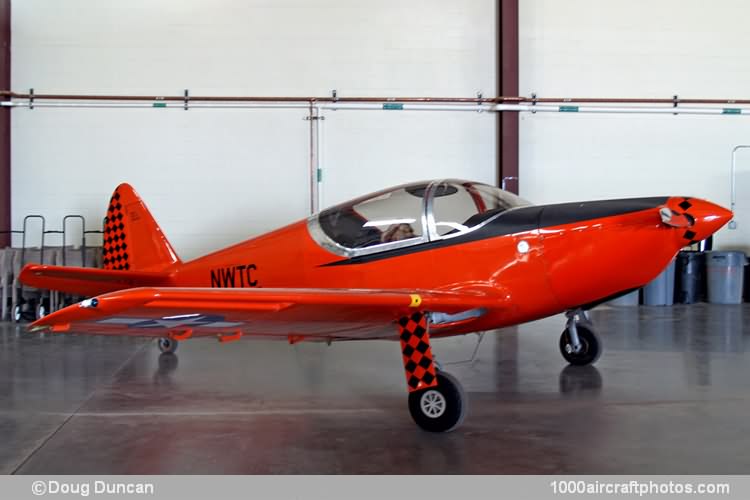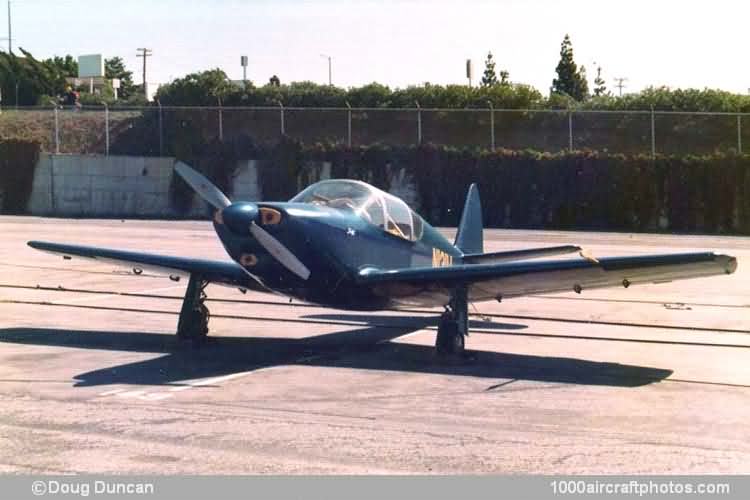06/30/2012. Remarks by Johan Visschedijk: "The origins of the Globe Swift go back to the Bennett Aircraft Corporation which was set up before WW II with the aim of using a new Bakelite bonded plywood for aircraft construction. The company became the Globe Aircraft Corporation in 1941 and designed its first aircraft with extensive use of the "Duraloid" plywood material. Two prototypes of the GC-1 were built (NX17688 c/n 1 and NX17690 c/n 2) and these were fitted with 80 hp Continental A-80 engines.
Globe was unable to put the GC-1 into production because of the onset of war and the company spent the period of hostilities building Beech AT-10s and Curtiss C-46s. When the restrictions on civil aircraft production were lifted, the GC-1 was taken off the shelf and substantially redesigned as an all-metal aircraft.
The GC-1A was a high performance low-wing monoplane with a retractable tail wheel landing gear and a fully enclosed side-by-side two-seat cabin. With the engine upgraded to an 85 hp Continental C-85 the prototype (NX17640 c/n 1) made its first flight in January, 1945. In the course of development many changes took place, including a revised engine installation, longer engine cowling and extended firewall, but the type certificate was eventually issued on July 5, 1946.
Production of the Swift was subcontracted to the Texas Engineering and Manufacturing Co. (later known as Temco) who built 408 GC-1As (c/n 2 to 409) before going over to production of the GC-1B Swift. This version was fitted with an 125 hp Continental C-125 engine and was outwardly similar to the GC-1A except for the modified engine cowling. In July, 1947, Globe was declared bankrupt with the result that Temco bought the assets of the business, including the Swift type certificate. They continued to build the GC-1B until 1951.
When production ceased a total of 1,502 production Swifts and three prototypes had been built. Construction numbers of the GC-1B were 1001 to 1527, 2001 to 2329 and 3523 to 3760. Temco also converted a batch of 22 GC-1Bs (c/n 1505 to 1526) to GC-1A standard and issued them with new c/n 3001 to 3522.
In 1949, Temco used the basic Swift design to produce the TE-1 Buckaroo tandem two-seat trainer. The USAF took some interest in the Buckaroo but placed no orders and only twenty aircraft were eventually constructed (including a batch of ten for the Royal Saudi AF). After production of the Swift and Buckaroo had ceased, Temco sold the type certificate to Universal Aircraft Industries ("Univair") which supplied spares for the Swift. Univair subsequently handed over the type certificate to the loyal band of owners who comprised the Swift Association.
During 1987, an updated version of the Swift was developed by LoPresti-Piper Aircraft Engineering Company.
The marking NWTC on the fuselage stands for Naval Weapons Testing Center (presently known as Naval Air Weapons Station, NAWS) China Lake, California."

